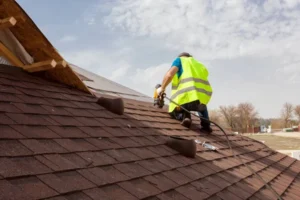There’s nothing worse than guests coming to the home you live in and they comment on how unpleasant or musty the air feels.
We’ve all had leaks and flooding happen in our homes, but do you know what to do when it leads to mold growth on walls? This can be a health hazard if you don’t remove the source of the mold or help it to dry quickly.
Be sure to read the rest of this helpful guide on how to deal with mold growth in the home after water damage or leaks.
Why Is There Mold Growth on Walls?
Mold is a type of fungi that reproduces through spores. These spores are tiny, invisible to the naked eye, and constantly floating around in the air. When the right conditions are present, the spores will land on a surface and start to grow.
In most cases, mold is the result of excess moisture, either from leaks or condensation. If you suspect the spread of mold, it’s important to take action quickly to mitigate the problem. Begin by identifying and addressing the source of the moisture.
If leaks are present, repair them and dry out the area thoroughly. If condensation is the issue, improve ventilation and insulation to reduce the chances of moisture build-up.
Cleaning Mold With Bleach
Cleaning up mold can be done by mixing one part bleach with three parts water in a spray bottle and spraying the solution onto the moldy area. Allow the solution to sit on the mold for at least 15 minutes before wiping it away with a damp cloth.
Treating Mold With Vinegar
Vinegar is a acidic substance which can help to kill mold. However, it is important to make sure that the vinegar is diluted before applying it to the moldy area. Undiluted vinegar can damage surfaces. It is also important to ensure that the area is well ventilated when using vinegar to treat mold, as the fumes can be harmful.
Getting Rid of Mold With Baking Soda
Mix equal parts baking soda and water and apply it to the affected area. Scrub the moldy area with the mixture and then wipe it away with a damp cloth. Repeat this process until the mold is gone. You can also use baking soda to prevent mold growth in the future by sprinkling it on surfaces that are prone to mold.
Stop Mold With Tea Tree Oil
Tea tree oil is a natural fungicide and antimicrobial, so it can help to kill mold. Simply mix a few drops of tea tree oil with water in a spray bottle and spritz onto the affected area. Leave it to dry and then wipe away any remaining mold.
Call in Specialists
If the previous solutions did not work, all in a mold specialist. They will be able to identify the type of mold and recommend the best course of action. If you’re in the Tri-State Area, you can check out this service and see if they fit your needs.
Deal With Mold Growth Immediately
If you find mold growth on walls, you should take steps to clean it and prevent it from coming back immediately. You can clean mold with a bleach or vinegar solution. You can also opt to use baking soda or tea tree oil.
And to prevent any future mold spores, keep your home clean and dry, and repair any leaks in your walls.
Did you find this article helpful? Keep reading our blog for more tips!









